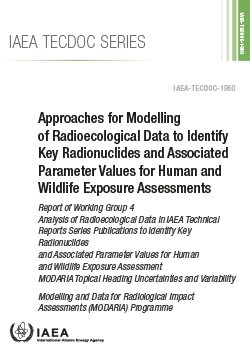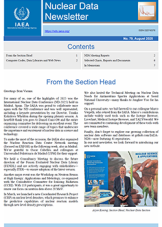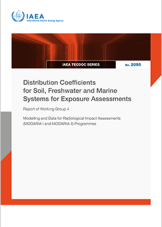Approaches for Modelling of Radioecological Data to Identify Key Radionuclides and Associated Parameter Values for Human and Wildlife Exposure Assessments
IAEA-TECDOC-1950
ISBN
978-92-0-105921-5
80 pages | 14 figures | € 18.00 | Date published: 2021
This publication was produced as part of the Working Group 4 of the IAEA Modelling and Data for Radiological Impact Assessments (MODARIA) programme, which focused on the analysis of radioecological data in IAEA Technical Reports Series publications to identify key radionuclides and associated parameter values for human and wildlife exposure assessment. The intent is to reduce uncertainties and to develop new approaches to strengthen the evaluation of the radiological impact to the public, as well as to flora and fauna, arising from radionuclides in the environment. The publication comprises two main sections. The first one considers prioritization approaches to identify the radionuclides and pathways that potentially contribute most to internal and external exposure to organisms in wildlife groups for different sources and exposure situations. The focus of the second section is the improvement of transfer parameter values for animal product data, namely cow and goat milk. Milk was selected as it often has a high priority in radiological environmental impact assessment. Examples of approaches that can be used to identify potentially important data gaps, illustrated using case studies are also presented. This publication is intended to provide Member States with technical information and data that can be used by their national authorities to develop and improve their models and approaches for radiological environmental impact assessment for facilities and activities.
Keywords:
Modelling, Radioecological, Data, Radioecological Data, Radionuclide, Parameter Value, Exposure, Assessment, Analysis, MODARIA, Modelling and Data, Radiological, Impact Assessment, Approach, Milk, Cow, Goat, Regulatory Control, Wildlife, Exposure Situation, Qualitative, Quantitative, Anthropogenic, Dose, Dose Rate, Radionuclide Prioritization, Prioritization, Animal Product, Transfer Parameter, Transfer Factor, Dataset



